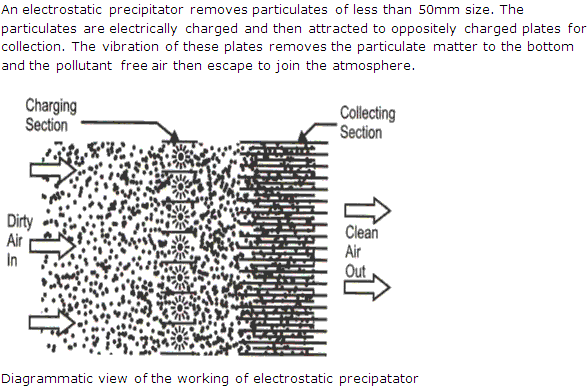Chapter 23 - Safe Disposal of Wastes Exercise 212
Question 1
What are the most important steps in waste management?
Solution 1
The important steps in waste management are:
(i) Dematerialization of production by reducing the amount of raw materials use and energy used in production.
(ii) Recycling wastes back into the production process.
(iii) Recovery of some ingredients and / or treatment of wastes.
(iv) Dispersal, dumping or storage.
(i) Dematerialization of production by reducing the amount of raw materials use and energy used in production.
(ii) Recycling wastes back into the production process.
(iii) Recovery of some ingredients and / or treatment of wastes.
(iv) Dispersal, dumping or storage.
Question 2
Give two-ecofriendly ways of treating kitchen wastes.
Solution 2
The two ecofriendly ways of treating kitchen wastes are :
1. Composting
2. Segregation of wet and dry waste.
1. Composting
2. Segregation of wet and dry waste.
Question 3
Give two benefits of composting.
Solution 3
Two benefits of composting are:
(i) It is an eco-friendly method of disposing wet garbage from households and biomass wastes from gardens.
(ii) The compost obtained acts as rich organic manure for the garden plants.
(i) It is an eco-friendly method of disposing wet garbage from households and biomass wastes from gardens.
(ii) The compost obtained acts as rich organic manure for the garden plants.
Question 4
Each question has four options. Choose the correct answer:
(i) Sewage water is purified by
(a) microorganisms
(b) light
(c) fishes
(d) aquatic plants
(ii) Composting is carried out from
(a) sewage sludge
(b) rubbish
(c) industrial wastes
(d) garbage and sewage sludge
(iii) Sewage sludge is used as
(a) manure
(b) biogas generators
(c) both (a) and (b)
(d) tipping
(iv) Sewage is broken down in
(a) primary treatment
(b) secondary treatment
(c) tertiary treatment
(d) all the above
(i) Sewage water is purified by
(a) microorganisms
(b) light
(c) fishes
(d) aquatic plants
(ii) Composting is carried out from
(a) sewage sludge
(b) rubbish
(c) industrial wastes
(d) garbage and sewage sludge
(iii) Sewage sludge is used as
(a) manure
(b) biogas generators
(c) both (a) and (b)
(d) tipping
(iv) Sewage is broken down in
(a) primary treatment
(b) secondary treatment
(c) tertiary treatment
(d) all the above
Solution 4
(i) (a) microorganisms
(ii) (d) garbage and sewage sludge
(iii) (c) both (a) and (b)
(iv) (b) secondary treatment
(ii) (d) garbage and sewage sludge
(iii) (c) both (a) and (b)
(iv) (b) secondary treatment
Question 5
Give two advantages of garbage incineration.
Solution 5
Two advantages of garbage incineration are:
(i) Incineration reduces the weight and volume of the waste by as much as 95%.
(ii) It helps in the treatment of clinical wastes and toxic pathogens.
(iii) It is designed in such a way that it can be also used to produce electricity.
(Write any two)
(i) Incineration reduces the weight and volume of the waste by as much as 95%.
(ii) It helps in the treatment of clinical wastes and toxic pathogens.
(iii) It is designed in such a way that it can be also used to produce electricity.
(Write any two)
Question 6
How is sewage water treated?
Solution 6
Sewage water is treated in three steps:
(i) Primary treatment - In this, the coarse and fine suspended , solids are removed by sedimentation, coagulation and precipitation.
(ii) Secondary treatment - It is essentially a biological treatment process which involves the removal of colloidal and dissolved organic substances and some toxic chemicals.
(iii) Tertiary treatment - Here, excess nutrients are removed to allow the reuse of that water.
(i) Primary treatment - In this, the coarse and fine suspended , solids are removed by sedimentation, coagulation and precipitation.
(ii) Secondary treatment - It is essentially a biological treatment process which involves the removal of colloidal and dissolved organic substances and some toxic chemicals.
(iii) Tertiary treatment - Here, excess nutrients are removed to allow the reuse of that water.
Question 7
Explain the working of an electrostatic precipitator.
Solution 7

Question 8
What is segregation?
Solution 8
Segregation is the separation of wet and dry wastes in order to dispose them safely.
Household wastes consist of organic biodegradable matter as well as non-biodegradable matter. They should be segregated from each other using separate bins. Wherever possible, the non-biodegradable matter is recycled and used.
The organic biodegradable matter i.e. wet waste must be separated from other dry wastes. They are collected by municipal workers and transported to a landfill.
Household wastes consist of organic biodegradable matter as well as non-biodegradable matter. They should be segregated from each other using separate bins. Wherever possible, the non-biodegradable matter is recycled and used.
The organic biodegradable matter i.e. wet waste must be separated from other dry wastes. They are collected by municipal workers and transported to a landfill.
Question 9
Give two uses of incineration.
Solution 9
Two uses of incineration are:
(i) Incineration reduces the weight and volume of the waste by as much as 95%.
(ii) It helps to destroy pathogens and toxins using high temperature, thereby playing role in the treatment of clinical wastes and certain hazardous wastes.
(i) Incineration reduces the weight and volume of the waste by as much as 95%.
(ii) It helps to destroy pathogens and toxins using high temperature, thereby playing role in the treatment of clinical wastes and certain hazardous wastes.
Question 10
Explain the methods of disposal of liquid wastes.
Solution 10
Most liquid wastes contain both dissolved and suspended matters. Treatment of such effluent involves the removal of contaminants and is done to prevent any adverse effects on receiving water or allow its reuse. Three steps are usually followed in the treatment of effluents:
Sewage water is treated in three steps:
(i) Primary treatment - In this, the coarse and fine suspended solids are removed by sedimentation, coagulation and precipitation.
(ii) Secondary treatment - It is essentially a biological treatment process which involves removal of colloidal and dissolved organic substances and some toxic chemicals.
(iii) Tertiary treatment - Here, excess nutrients are removed to allow the reuse of that water.
Sewage water is treated in three steps:
(i) Primary treatment - In this, the coarse and fine suspended solids are removed by sedimentation, coagulation and precipitation.
(ii) Secondary treatment - It is essentially a biological treatment process which involves removal of colloidal and dissolved organic substances and some toxic chemicals.
(iii) Tertiary treatment - Here, excess nutrients are removed to allow the reuse of that water.
Chapter - Exercise
Solution 1
Solution 2

0 comments:
Post a Comment